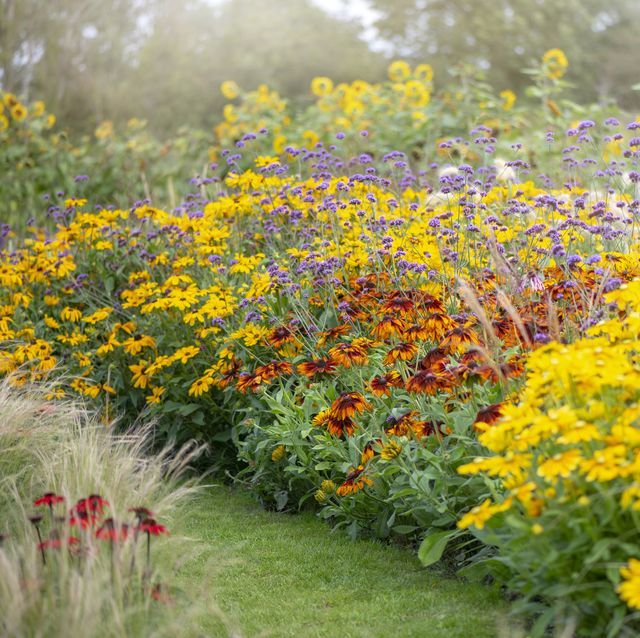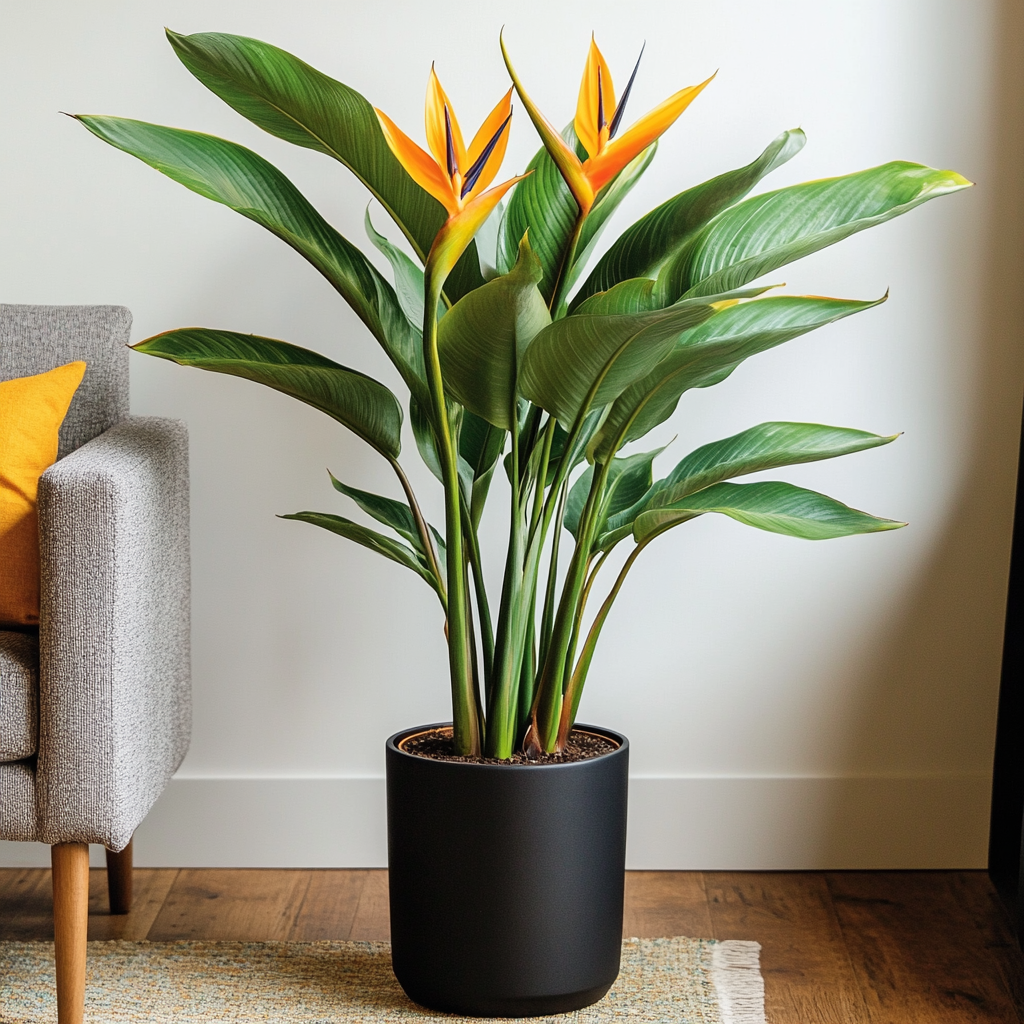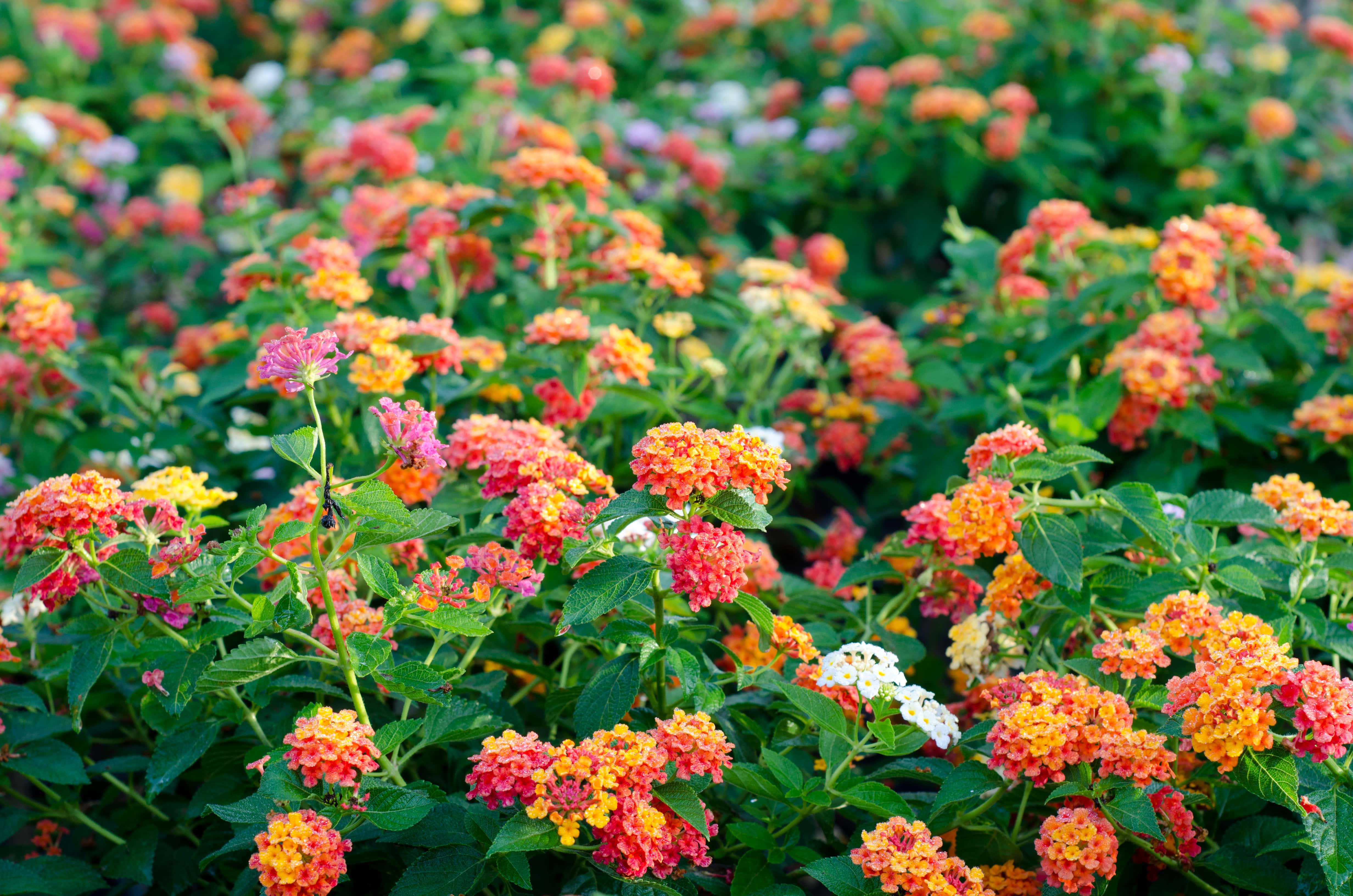Brighten your home with year-round flowering plants. They add color and life indoors.
Discover indoor plants that bloom continuously, creating a cheerful atmosphere. Flowering plants can transform any room, offering beauty and vibrance. They purify the air and enhance décor effortlessly. Caring for them is simple, making them perfect for beginners and plant lovers alike.
These plants adapt well to indoor settings, thriving with minimal sunlight. You can enjoy their blooms throughout the seasons, refreshing your space with nature’s touch. Dive into our selection of top flowering indoor plants and find the perfect fit for your home. Keep reading to learn how these stunning plants can enhance your living space with continuous blooms.

Credit: www.goodhousekeeping.com
Benefits Of Flowering Indoor Plants
Flowering indoor plants are more than just decorative pieces. They bring numerous benefits to your living space, transforming it into a healthier and more vibrant environment. Whether you’re looking to enhance your home’s aesthetic appeal or improve air quality, these plants can be your ideal companions. Let’s delve into why having flowering indoor plants can truly uplift your living space.
Aesthetic Appeal
Imagine waking up to the sight of vibrant blooms greeting you each morning. Flowering indoor plants can add a splash of color and life to any corner of your home. Their unique shapes and hues can complement your décor and create a soothing atmosphere.
Have you ever noticed how a simple orchid can turn a bland room into a sophisticated space? These plants can be conversation starters, often drawing admiration from guests. They add character and charm, making your home feel more inviting.
Moreover, changing the arrangement or types of flowering plants can refresh your interiors without significant effort. This flexibility allows you to keep your living space dynamic and ever-changing, aligning with your mood or the season.
Air Purification
Did you know that flowering indoor plants can help purify the air in your home? They absorb toxins and release oxygen, improving the overall air quality. This can be particularly beneficial if you live in urban areas with pollution.
Plants like peace lilies and gerberas are known for their air-purifying properties. They can reduce harmful pollutants such as formaldehyde and benzene, contributing to a healthier environment. It’s like having a natural air filter in your home.
Consider this: if you ever feel fatigued or experience headaches indoors, it might be due to poor air quality. Introducing flowering plants can be a simple yet effective solution. Wouldn’t you want to breathe cleaner, fresher air while enjoying the beauty of nature?
Flowering indoor plants offer more than just visual appeal; they contribute to your health and wellbeing. As you explore the variety of plants that bloom year-round, think about how they can enhance your daily life. Are you ready to bring nature’s wonders into your home?
Choosing The Right Indoor Bloomers
Discover top indoor plants that bloom all year. Peace Lilies and African Violets brighten spaces with vibrant colors. Orchids offer elegance, while Anthuriums add a tropical feel. Ideal choices for lasting beauty indoors.
Choosing the right indoor bloomers can be a delightful journey. Indoor plants that flower year-round bring vibrant colors and refreshing energy into your home. But with so many options available, how do you choose the perfect bloomers for your space?Space Considerations
Before you buy, think about where you’ll place your new plant. Do you have a cozy corner in mind or a spacious sunroom? Some plants, like the peace lily, thrive in smaller spaces and can even improve air quality. Others, such as the hibiscus, might need more room to spread their lush foliage and vivid blooms. Measure your space and visualize how the plant will fit and enhance the area.Light Requirements
Light is essential for flowering plants to thrive and bloom. Consider the natural light in your home. Does your room get plenty of sunlight, or is it often shaded? African violets and orchids are perfect for windowsills with indirect light. Meanwhile, the Christmas cactus can brighten up a dimmer spot. Take a moment to observe the light patterns in your home throughout the day. Choosing the right plant isn’t just about aesthetics. It’s about creating a harmonious environment where your plant can flourish. Have you ever brought a plant home only to see it wilt? It might have been a mismatch in light or space. By considering these factors, you can ensure a long-lasting, blooming relationship with your indoor plants. Remember, every plant has its own personality and needs. Understanding these can make your indoor garden not just survive but thrive. What kind of flowering plant would brighten up your home?African Violets: A Classic Choice
African violets stand out as a classic choice among indoor plants that bloom year-round. Their vibrant, colorful flowers add charm to any space. Easy to care for, they thrive with minimal attention, making them perfect for busy plant lovers.
African Violets are a beloved choice for indoor gardeners. Their vibrant blooms and velvety leaves make any space lively. These classic plants are easy to care for and bloom throughout the year. Perfect for adding color to your home, they thrive indoors with the right care.Care Tips
African Violets need specific care to flourish. They prefer bright, indirect sunlight. Direct sunlight can harm their delicate leaves. Water them from the bottom to avoid leaf spots. Use room temperature water. Keep the soil moist but not soggy. Fertilize monthly with a balanced plant food. This keeps them healthy and blooming.Blooming Patterns
These plants bloom in cycles. Each cycle lasts several weeks. With proper care, they can bloom multiple times a year. Their flowers come in many colors. Purple, pink, and white are common. The blooms are small but plentiful. Deadheading encourages new blooms. Remove spent flowers regularly. This keeps the plant looking fresh and vibrant.Peace Lily: Elegance And Ease
Adding a Peace Lily to your indoor garden can bring a touch of elegance and simplicity. Its glossy green leaves and striking white blooms make it a favorite among plant enthusiasts. Plus, its low-maintenance nature means you can enjoy its beauty without much hassle.
Watering Needs
Peace Lilies are quite forgiving, which makes them perfect for busy individuals. They prefer slightly moist soil, so water them once the top inch of soil feels dry. Overwatering can lead to root rot, so it’s better to underwater than overwater.
I once forgot to water my Peace Lily for two weeks, and it simply drooped as a gentle reminder. A quick drink brought it back to life. This resilience makes it ideal for those who might forget their watering routine occasionally.
Growth Conditions
Peace Lilies thrive in low to medium, indirect sunlight. Direct sun can scorch their leaves, so placing them near a north-facing window works well. They also tolerate fluorescent lighting, making them suitable for offices.
Temperature is another aspect to consider. They grow best in temperatures between 65-85°F (18-29°C). Avoid placing them near cold drafts or heat sources to maintain their health.
Do you have a room that feels a bit dull? A Peace Lily can brighten it up while purifying the air. Its ability to filter toxins like formaldehyde and ammonia makes it a practical choice for healthier indoor spaces.
Why not add a Peace Lily to your collection? Its combination of elegance and ease makes it a standout choice for any indoor plant lover.
Orchids: Exotic Beauty Indoors
Orchids bring a touch of exotic beauty to any indoor space. Their captivating blooms and diverse colors make them a popular choice for plant lovers. Orchids can bloom all year, enhancing your home with vibrant colors. They are not just beautiful, but also adaptable to indoor environments. With the right care, orchids can thrive and bloom repeatedly.
Variety Of Species
Orchids offer a vast range of species to choose from. Each species has unique colors, shapes, and sizes. Some popular types include Phalaenopsis, Dendrobium, and Cattleya. Phalaenopsis, also known as the moth orchid, is easy to grow indoors. Dendrobium orchids offer stunning flowers and are very versatile. Cattleya orchids, famous for their showy flowers, are perfect for bright spaces.
Maintenance Techniques
Caring for orchids requires some special techniques. Provide them with bright, indirect sunlight. Direct sunlight can harm their delicate blooms. Water them sparingly, allowing the soil to dry between waterings. Too much water can lead to root rot. Use a balanced fertilizer every few weeks for healthy growth. Ensure good air circulation around the plant. This helps prevent diseases and keeps the leaves healthy.
Begonias: Year-round Blooms
Begonias brighten any room with their vibrant blooms all year long. These popular indoor plants require minimal care. Their colorful flowers make them a top choice for consistent indoor beauty.
Begonias are a delightful choice for those who crave year-round blooms indoors. With their vibrant colors and diverse shapes, begonias can transform any space into a lively oasis. They are easy to care for and perfect for beginners and seasoned gardeners alike. Imagine the joy of seeing bright flowers every time you walk into a room.Ideal Environment
Begonias thrive in a warm, humid environment with indirect sunlight. Place them near a window with filtered light, but avoid direct sun, which can scorch their leaves. Do you have a bathroom with a window? That’s an ideal spot! If the air in your home is dry, consider using a humidifier or placing a tray of water near the plant to boost humidity. Keep the temperature steady, ideally between 65-75°F. Rapid changes can stress the plant and affect blooming. Water when the top inch of soil feels dry, but ensure the pot has good drainage to prevent root rot. A peat-based soil mix works well for begonias, providing the right balance of moisture retention and aeration.Pest Management
While begonias are generally resilient, they can fall prey to pests like aphids and spider mites. Regularly check the undersides of leaves for any signs of these intruders. Spotting them early makes management easier. If you notice pests, a simple solution is to spray the affected areas with a mixture of water and mild dish soap. This natural remedy often works wonders and spares your plant from chemical exposure. Do you prefer organic solutions? Neem oil is another effective option, known for its pest-repelling properties. Keeping your begonias healthy also involves regular cleaning. Wipe the leaves gently with a damp cloth to remove dust and prevent pests. This not only keeps your plant looking vibrant but also enhances its ability to photosynthesize efficiently. Begonias are a fantastic choice if you want flowers in your home all year. With the right care, they will reward you with continuous blooms and brighten up any space. Are you ready to add these lovely plants to your indoor garden?Bromeliads: Tropical Vibrance
Bromeliads bring a burst of tropical vibrance to any indoor space. These striking plants are not just beautiful; they can bloom year-round, offering a constant splash of color. With their unique shapes and colorful foliage, bromeliads are a favorite among plant enthusiasts seeking to brighten up their home with a touch of the tropics.
Colorful Varieties
Have you ever walked into a room and been immediately drawn to a plant with a dazzling array of colors? Bromeliads offer an array of varieties that range from fiery reds to sunny yellows and deep purples. Each variety has its own charm and can dramatically change the vibe of your space.
Consider the Guzmania, which boasts bright red or orange flowers. Or the Aechmea with its stunning pink and blue hues. These plants are not just decorations—they are conversation starters. Imagine your guests asking about that intriguing plant with its vivid, almost surreal colors.
Humidity Requirements
Understanding the humidity needs of bromeliads is crucial for their health and beauty. These tropical plants thrive in environments with higher humidity levels. If your home is on the dry side, you might need to make some adjustments.
A simple solution is to mist your bromeliads regularly or place them near a humidifier. This will help maintain their vibrant look and keep them blooming. You might find that the extra care required in managing humidity is a rewarding experience, as your bromeliads flourish and become a lush centerpiece in your home.
Does your space have the right humidity to keep bromeliads thriving? If not, what adjustments are you willing to make for these stunning plants?

Credit: www.houseplant.co.uk
Jasmine: Fragrance In Every Room
Jasmine fills every room with its delightful fragrance, offering year-round blooms as a top indoor plant. Bright, star-shaped flowers enhance home decor, creating a soothing atmosphere. Perfect for adding beauty and aroma to any living space.
Imagine stepping into a room and being greeted by the delicate, sweet aroma of jasmine. This enchanting scent has the power to transform your indoor space, creating a serene and welcoming atmosphere. Jasmine offers more than just fragrance; it adds beauty and elegance with its delicate white or pink blooms. Whether you’re an experienced gardener or a newbie to indoor plants, jasmine is a fantastic choice for anyone looking to bring a touch of nature indoors.Types Of Jasmine
Jasmine comes in various types, each with unique characteristics. Common Jasmine (Jasminum officinale) is a popular choice, known for its prolific blooming and strong scent. It’s perfect for pots or hanging baskets. Arabian Jasmine (Jasminum sambac) is another favorite, often used to make perfumes. It blooms in clusters and can thrive in warm indoor environments. Madagascar Jasmine (Stephanotis floribunda), despite its name, is part of the jasmine family. It produces larger, waxy flowers and is perfect for a more tropical vibe. Consider your environment and the type of jasmine that best suits your space. Do you prefer a more traditional scent or something a bit exotic?Pruning Practices
Effective pruning is essential for keeping your jasmine healthy and blooming year-round. Trim your plant regularly to encourage new growth and to maintain its shape. Remove dead or damaged stems promptly to prevent disease and improve air circulation. This practice also helps the plant focus its energy on producing vibrant blooms. Pruning can be a therapeutic process. You gain a sense of accomplishment as your jasmine thrives under your care. Have you tried pruning with a friend? It can be a fun and rewarding activity. Incorporating jasmine into your indoor garden is about more than aesthetics—it’s about creating a fragrant, calming sanctuary. With the right type and proper care, jasmine can be the star of your indoor plant collection. Are you ready to enjoy a fragrant room year-round?Caring For Indoor Bloomers
Discover vibrant indoor plants that brighten your home all year. African violets, peace lilies, and orchids offer continuous blooms. These beauties require simple care, ensuring colorful interiors without much effort.
Caring for indoor bloomers is a rewarding task for plant lovers. These vibrant plants bring life and color to any home. Proper care ensures they bloom beautifully year-round. Understanding their needs is crucial to maintaining their health. Indoor plants require specific attention to thrive. This includes regular watering, adequate sunlight, and suitable soil. Fertilization and pest control play vital roles in their care. Let’s explore how to nurture your indoor bloomers effectively.Fertilization
Fertilizing indoor bloomers boosts their growth. Use a balanced fertilizer for best results. Liquid fertilizers are easy to apply and absorb quickly. Fertilize every month during blooming seasons. Reduce frequency in dormant periods. Always follow the instructions on the fertilizer package. Over-fertilizing harms the plant. It may lead to salt buildup in the soil. Indoor plants need nutrients to produce flowers. Nitrogen, phosphorus, and potassium are essential. These nutrients enhance leaf and flower development. Regular fertilization keeps plants healthy and strong.Pest Control
Pests can damage indoor bloomers severely. Common pests include aphids, spider mites, and whiteflies. Inspect plants regularly to spot infestations early. Use a gentle soap solution to treat pests. Neem oil is an effective organic option. It repels insects without harming the plant. Maintaining cleanliness helps prevent pest problems. Remove fallen leaves and debris from pots. Ensure proper air circulation around plants. This keeps them healthy and less prone to attacks. Regular monitoring and timely intervention protect your indoor bloomers.
Credit: bouqs.com
Enhancing Bloom Longevity
Enhancing bloom longevity in indoor flowering plants is essential. It ensures vibrant blossoms throughout the year. A few careful strategies can help. By focusing on potting methods and seasonal adjustments, you can extend the life of blooms. This not only beautifies your space but also brings joy and freshness indoors.
Proper Potting
Choosing the right pot is crucial for plant health. It should allow proper drainage. This prevents waterlogging, which can damage roots. The pot should be large enough for root growth. A cramped pot can stunt plant development. Use fresh, nutrient-rich soil. It provides essential nutrients for prolonged blooms.
Seasonal Adjustments
Different seasons require different plant care. In winter, reduce watering. Plants need less moisture in cooler months. In summer, increase watering to compensate for evaporation. Provide sufficient light year-round. Natural light may decrease in winter. Consider using grow lights to supplement. Adjusting care seasonally keeps blooms vibrant.
Conclusion
Year-round blooming indoor plants brighten any space. They bring life and color. Easy to care for, they suit beginners and pros alike. Choose the right plant for your home. Consider light and water needs. Enjoy watching them flourish. Indoor plants also improve air quality.
They add a calming touch. Perfect for any room. Start with one or two. See the difference they make. Indoor blooms cheer up dull days. A lovely addition to your home decor. Keep exploring new varieties. Your indoor garden will thank you.
Happy planting!

